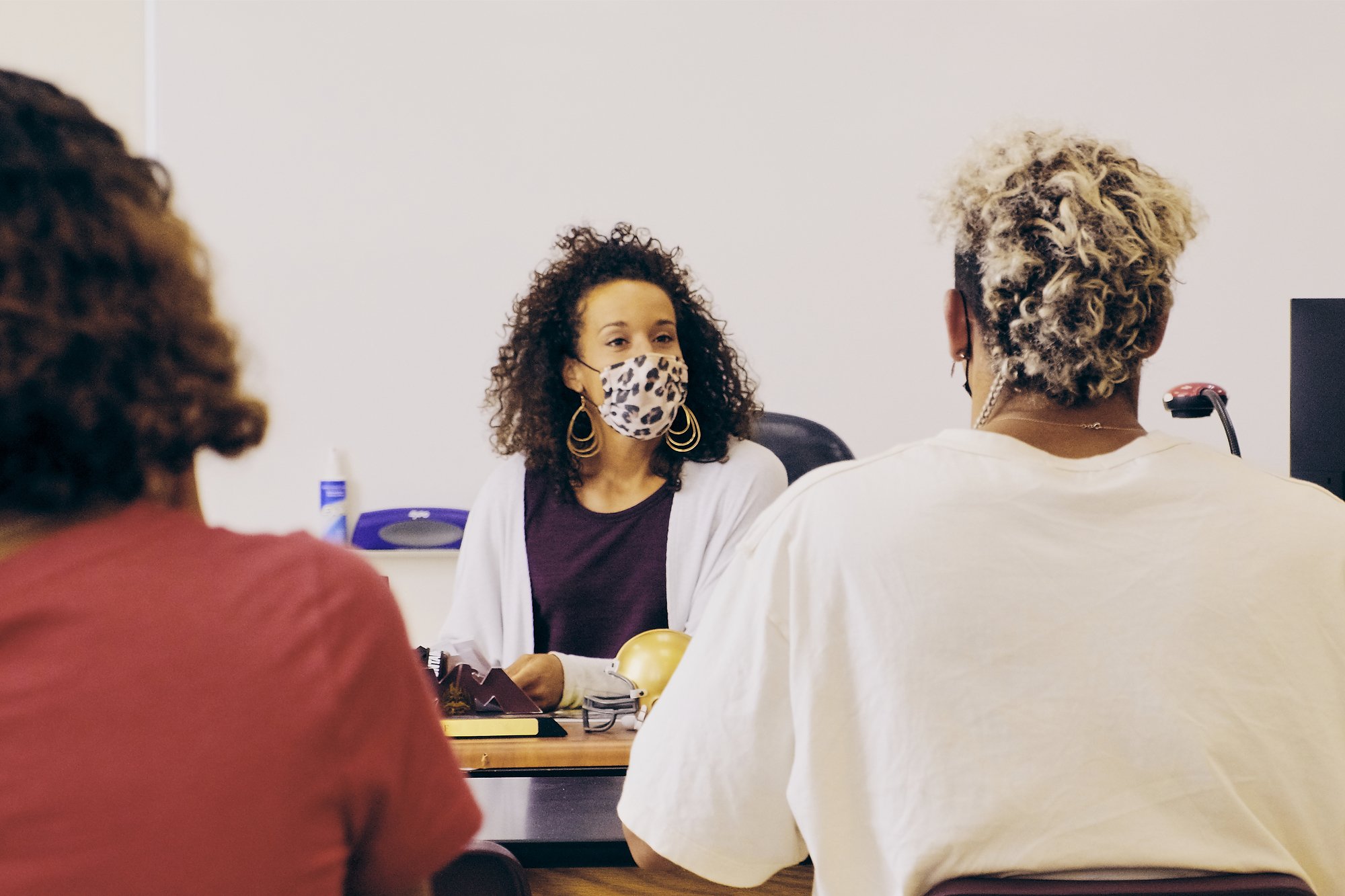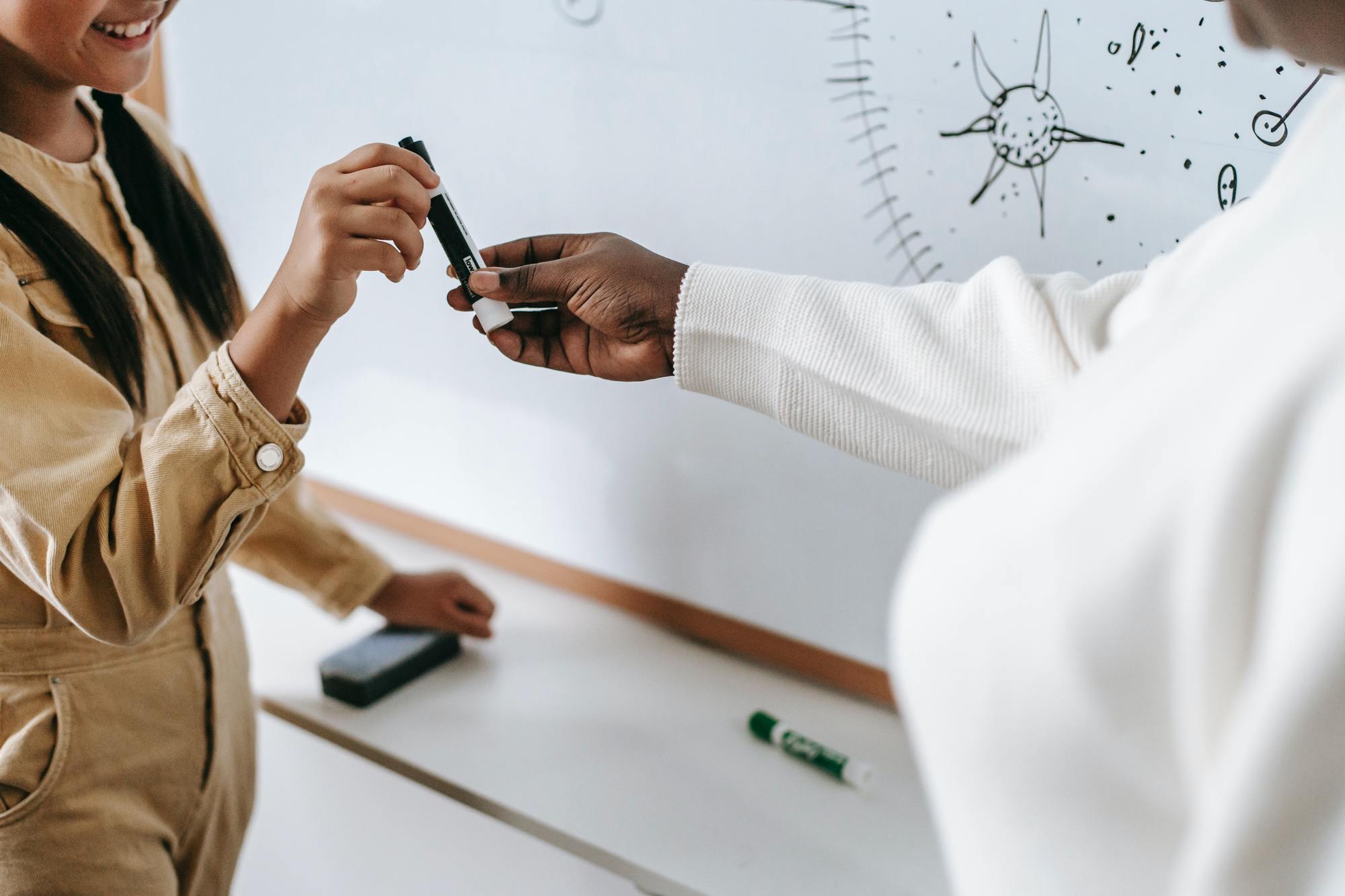Diversity Starts with Teachers: Creating a Community to Keep Educators of Color in the Classroom
Education Scholar Travis Bristol and BIPOC Teach Plus Fellows discuss the politics involved in education and their reasons for staying in the classroom.

Schools serve many purposes. They prepare the next generation of workers; help students self-actualize into adults; bring communities together; and shape, teach, and perpetuate societal values. However, schools also play a role in opening new possibilities for our students. Students who may see their identity as limited may learn what academic success can look like through the educators that surround them.
In short, high school and society are inextricably linked. As part of our work in this area, we’ve written and invited contributors to write about the importance of citizenship education, the need for immersive moral education, and how school meals work to feed all of our students.
We also invited renowned scholar Travis Bristol and a group of Teach Plus Fellows to discuss how they see the state of education and the role educators of color play in the fight for equity. Our first conversation led to insights around the importance of teacher diversity for BIPOC students and the political aspects of teaching and education at large.
We Need Teacher Diversity to Build Educational Equity
Education can, in fact, be a vehicle for progressive transformation in America. More importantly, these insights acknowledge the need to create space for educators to come together—in community—to learn how to support their students and connect their individual actions to a larger fight for equity.
“A strong democracy has a diverse representation of people in all areas of life,” Bristol explains. “However, teachers of color make up approximately 20 percent of all teachers in our nation’s schools. We need to increase the number of teachers of color for all students.”
We know that diversity for diversity’s sake is not enough to make real progress in education. We need diverse teachers deeply dedicated to building equity in our schools, determined to build an education system that works for all.
Diversity Starts with Teachers in the Classroom
Every educator has a different journey into the classroom. However, teaching often unlocks different avenues of change for educators involved in the fight for a more equitable and just society.
Takeru “TK” Nagayoshi is a Japanese-American educator whose career began with Teach For America. “My way into the classroom was incidental. I didn’t know what I was going to do after college and teaching kind of filled a gap. But the reason that I stayed was also because of what teaching is,” shares TK.
“Teaching is a force of progressive policy and progressive politics. The people drawn to the profession are so oriented towards social justice and centered on principles like equity, diversity, and inclusion. Education is a microcosm of the broader systemic failures in our country.”

With these words, TK brings to light an important point: teachers play an important role in shaping and nurturing young people throughout their development. In the ways they teach, the voices they advocate for, and the curricula they include, educators help mold students’ understanding of diversity in a changing world.
As students’ identities continue to shape and evolve, having diverse teachers in the classroom is ever-critical—ensuring that students have empathetic mentors in their lives who can relate to, understand, and guide them in their learning.
Shaping the Next Generation: Teaching Diversity in High School
Daniel Helena, an Afro-Latinx educator based in Los Angeles, also journeyed into the classroom haphazardly. However, teaching’s power for positive change led him to stay. The profession allows him to solve problems that he experienced as a student and to situate and educate the next generation on the stark inequalities in education—a social issue that Helena was oblivious to as a student.
“Once I started teaching, I realized that it is a really altruistic career. While it’s easy to just pat myself on the back and reward myself for doing this work, I’ve also had to repurpose the reason why I’ve stayed in the classroom,” explains Helena. “In a lot of ways, it does feel like a calling. I feel like I’m responsible to pay the care and support I received forward. Right now, I work in communities where families and parents have a very limited understanding of how our education system works and who the beneficiaries of the system are. I try to pave the way forward like the educators who worked to explain that for me.”
Helena’s reasons for teaching emphasize the importance of community-building, an ongoing intergenerational effort in which the current generation educates the next one so that communities can continuously build a more just and equitable future.
The Importance of Building Diverse Communities
For educators dedicated to building diversity and looking to connect their work to larger structural inequities, it can be hard to make those connections on your own. Coming together in community with other educators around a joint mission can offer the opportunity to explore the inequities that exist within our education system on the local, state, and national levels.
“I joined Teach Plus, during a time when I had a lot of questions about state education,” TK continues. “My school was under an accountability model that allowed the Massachusetts state government to overtake the school. Some good things came out of this process, but there were decisions made that weren’t always in the best interest of the students or the school. I had a lot of thoughts about whether accountability measures fully meet the holistic needs of a school community.”

“I didn’t know how to channel those thoughts into action. I had a hard time understanding the situation at hand. Teach Plus gave me a cohort of other educators who worked at schools in the middle of similar transitions.”
Through this collaborative cohort, TK learned more about education in America and learned how to position his own work in the classroom into larger social movements for equity. “As a group of educators, we took the time to examine the narrative and the history behind the policies that dictate the lives of the teachers and the students at our schools,” TK elucidates. “From that experience, I learned to articulate so many issues in education. Through analysis, discussion, and collaboration, I learned that schools are more than academic institutions. They are a community resource.”
How Teach Plus Provided an Educator in Dallas with a Diverse Teaching Community
Similarly, Shareefah Mason, a Black educator in Dallas, collaborates with other educators to create a more just education system. “I’ve always been committed to doing this work on the grandest scale possible but didn’t always know how to action that,” explains Mason. “When I became part of the Teach Plus fellowship, I was surrounded by all of these amazing educators and finally felt like I was no longer in the minority. I felt like I was with my people. People who were committed to education. People who were inclusive in their dedication to making a better system.”
“Our education system is extremely flawed and it’s extremely skewed,” stated Mason. “But when you are empowered and surrounded by educators who believe in the work as much as you do, so much good can happen. Even if that just means helping each other grow.”
Developing a Passion for Diversity—and Subsequently, a Voice
Andrea Thomas, a Native educator in New Mexico, believes that collaborating and speaking to educators validates her work and her desire to advocate for a better education system. “I’m really grateful to be able to speak to other educators. New Mexico operates on local control, so teachers feel like they work in isolation. In a particular community, there might not be a lot of people advocating for change,” Thomas states.
Coming into contact with other educators determined to make equitable changes helped Thomas understand how to navigate the political landscape. “When I came into teaching, I didn’t know how the system worked. I knew that I wanted to educate and that I wanted to educate differently, but I did not understand the entire landscape of education.”
She continues, “I didn’t know how deep some of the inequities were. Once I learned more, I started to develop my voice. Collaborating with other educators has helped shape my views and my voice.”
Centering Teaching Around a Mission of Equity
Programs like Teach Plus create space for educators to come together, understand how their work fits into larger narratives of structural inequity, and find resources to rethink high school in their school communities.
“I’ve grown so much in the last four years being in a community with so many talented educators. I’ve been able to go back into the classroom and really start to create a diverse curriculum for my students,” Mason articulates. “I have the tools to make the educators and people around me better by providing data, case studies, and information to prove that teacher diversity is so important. It’s so easy for us to live in our bubble, isolated. But when we are in groups that bring together people around a shared mission, we can gain the support that we need to go back and make a change in our communities.”

The benefits and growth Thomas experienced in the community set her up to continue this work on her own. “Having the support of other educators—seeing them and learning from them—fostered my growth. It allowed the students in my classroom to have opportunities and it positioned me to impact my school community positively.”
Educators gain so much when they take the time to examine how their work fits into the larger political landscape in America. “It was such an eye-opening experience to connect the experiences that we’re having as an educator to conversations that are taking place in our country,” TK explained. “That has been a reason for why I’ve always stayed in the classroom.”
Many thanks to Travis Bristol for facilitating this conversation.









